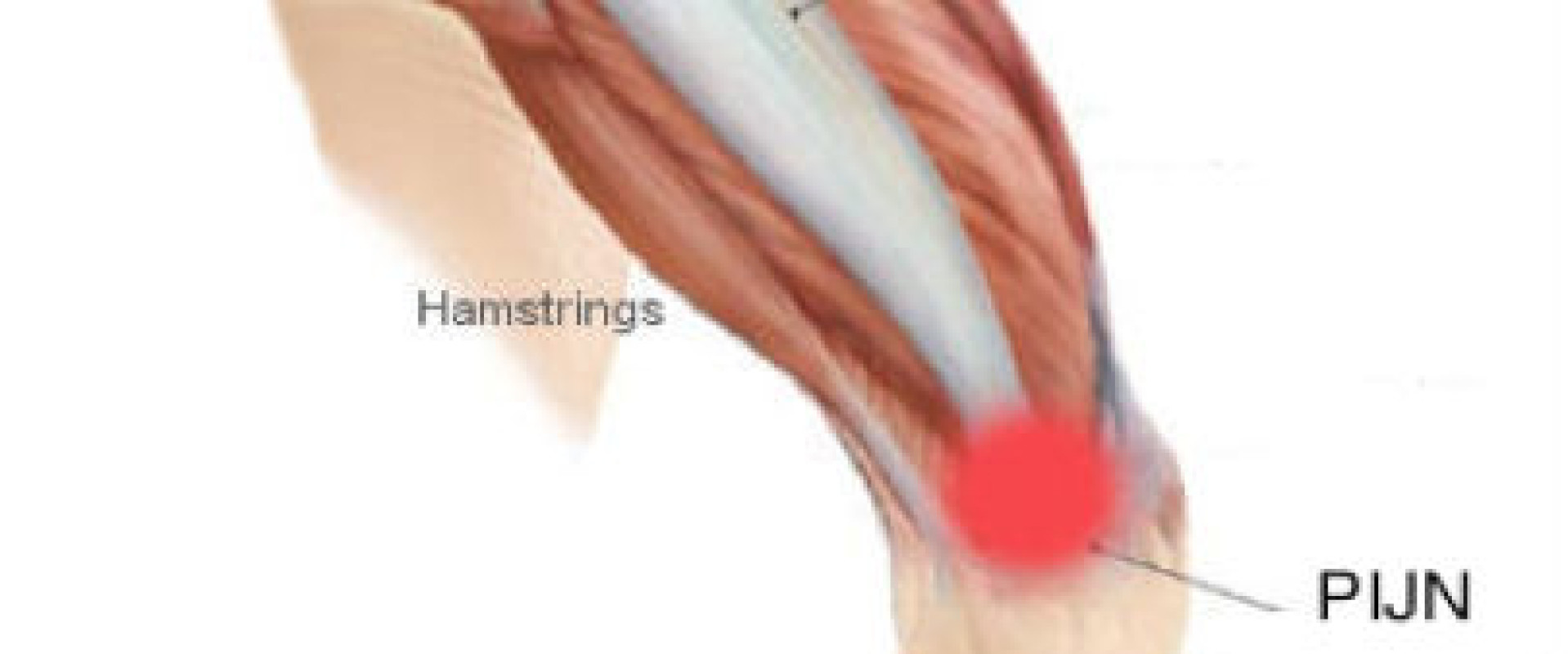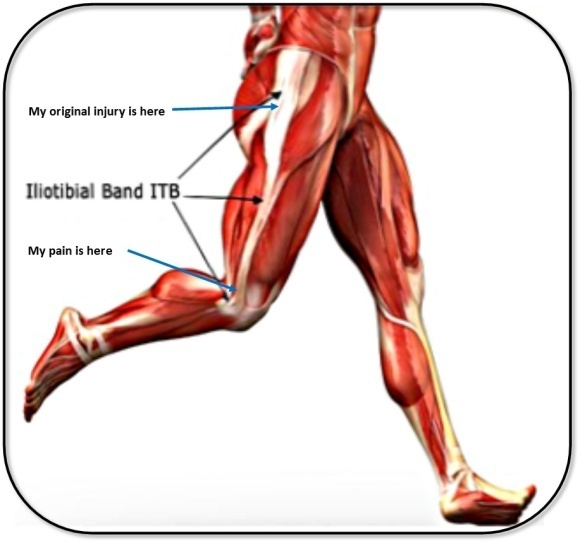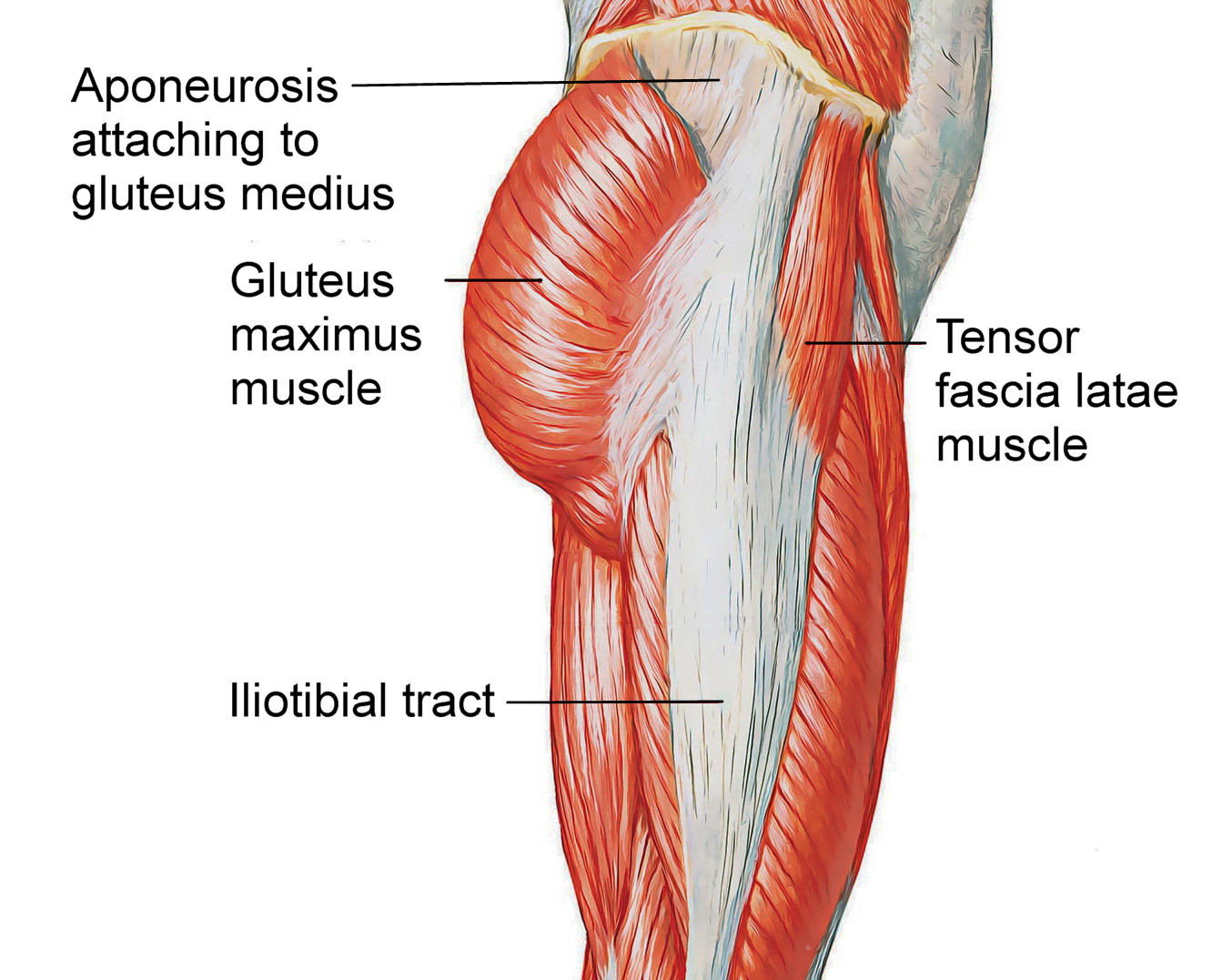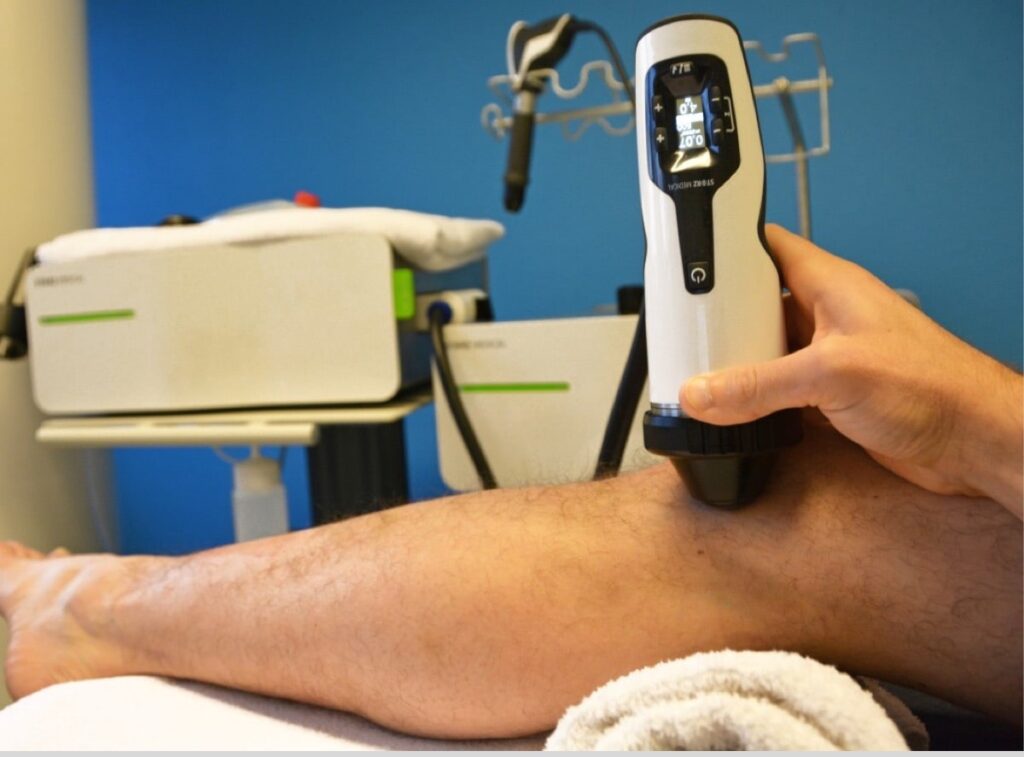
Iliotibial Band Syndrome Differential Diagnoses Management TeachMeSurgery
The fascia lata is the deep investing fascia of the thigh, encasing the muscles of the hip and lower extremity in this region [].The iliotibial (IT) tract is a strong longitudinal band of this deep fascia in the lateral thigh [].Many investigators have sought to characterize the anatomy of the IT tract, but reports of its exact anatomy are still varied and inconsistent.

Tractus iliotibialis frictie syndroom page Wat is het?
Iliotibial band syndrome (ITBS or IT band syndrome) is an overuse injury of the connective tissues that are located on the lateral or outer part of the thigh and knee. It causes pain and tenderness in those areas, especially just above the knee joint. Iliotibial band syndrome is the most common cause of lateral knee pain in runners and bicyclists.

ITB (Iliotibial Band) Syndrome My Family Physio
Iliotibial band friction syndrome is a condition characterized by excessive friction between the iliotibial band and the lateral femoral condyle and presents with activity related lateral knee pain. Diagnosis is made clinically with tightness of the IT band (Ober's test) with tenderness over the lateral femoral condyle made worse with a single.

Iliotibial Band Syndrome (“Runner’s Knee”) Complete Physio
Iliotibial band (ITB) friction syndrome is known to be one of the main causes of lateral knee pain related to an overuse injury. In the field of knee arthroplasty, ITB traction syndrome has been reported following guided motion total knee arthroplasty, due to posterior femoral translation and internal tibial rotation during knee flexion.

Iliotibial Band Friction Syndrome The Physio Approach
The iliotibial band tract or IT band (ITB) is a longitudinal fibrous sheath that runs along the lateral thigh and serves as an important structure involved in lower extremity motion. The ITB is also sometimes known as Maissiat's band. The ITB spans the lower extremity on its lateral aspect before inserting on Gerdy's tubercle on the proximal/lateral tibia.

Tractus iliotibialis frictie syndroom Oefeningen Hier Heb Ik Pijn
Iliotibial tract. The iliotibial tract or iliotibial band ( ITB; also known as Maissiat's band or the IT band) is a longitudinal fibrous reinforcement of the fascia lata. The action of the muscles associated with the ITB ( tensor fasciae latae and some fibers of gluteus maximus) flex, extend, abduct, and laterally and medially rotate the hip.

Itb Band Is It Band Tendinitis Really A Tendinitis Iliotibial band (it band) syndrome is an
Proximal iliotibial band syndrome represents a strain injury of the proximal iliotibial band enthesis at the iliac tubercle. Epidemiology Usually presents in young athletes (although can present in non-athletes). There may be increased predilec.

Tractus iliotibialis Syndrom / Physio Team Laun YouTube
Iliotibial band syndrome (ITBS) — also misleadingly known as iliotibial band friction syndrome — is a common 1 repetitive strain injury that causes pain mainly on the side of the knee, especially when descending stairs and hills.It is often maddeningly stubborn. The injury mainly plagues runners, but a few unlucky cyclists and hapless hikers will get it too, and it may even be common in.

Iliotibiaal Band Syndroom Diagnose & Behandeling voor Fysio's
Iliotibial band friction syndrome is a common occurrence among physically active individuals, causing pain in the lateral knee. There is much to be learned about the etiology, pathology, and optimal treatment of the condition. Many published studies seem to approach the problem from differing and hard-to-reconcile viewpoints.

How To Alleviate Iliotibial (IT) Band Pain
Possible causes of a tight iliotibial band include: Excessive foot pronation: Your foot naturally rotates outward. That stretches the iliotibial band and brings it closer to your bones. Hip abductor weakness: Abduction of the hip is when your hip turns away from your body.

Why Stretching Doesn't Relieve Iliotibial Band Syndrome
The literature handles different definitions of Iliotibial Band Syndrome (ITBS), which is sometimes referred to as Iliotibial Band Friction Syndrome, runner's knee, or tractus iliotibialis syndrome (TITS).It is the most common running injury of the lateral side of the knee (Ellis et al. 2007) and the second most common overuse syndrome of the knee joint, after patellofemoral pain syndrome.

Iliotibial (IT) Band Syndrome — PhysioU
The iliotibial band ( ITB) (also referred to as the iliotibial tract) is a thick band of fascia along the lateral aspect of the thigh. It is a thickening in the fascia lata. Superiorly, it splits to enclose and anchor the aponeurosis of tensor fasciae latae and posteriorly most of the tendon of gluteus maximus 1 . The band consists of deep and.

Iliotibial Band Syndrome (ITBS) Orthopaedic Associates of Riverside
pain when running or doing other activities involving the bending of the knee. a clicking sensation where the band rubs against the knee. lingering pain after exercise. a knee that is tender to.

Iliotibial Band Friction Syndrome Sport and Spine Rehab Clinic
Iliotibial band syndrome (ITBS) is a common knee injury that usually presents with pain and/or tenderness on palpation of the lateral aspect of the knee, superior to the joint line and inferior to the lateral femoral epicondyle.. It is considered a non-traumatic overuse injury, often seen in runners, and is often concomitant with underlying weakness of hip abductor muscles.

Lower limb support OKD17 Reh4Mat lower limb orthosis and braces Manufacturer of modern
Iliotibial band syndrome commonly affects young patients who are physically active, most often long-distance runners or cyclists. The exact prevalence is unknown, but one study has found the prevalence among actively-training marines to be higher than 20% 5 . Iliotibial band syndrome accounts for 12% of running-related overuse injuries 4.

Tractus Iliotibialis Frictie Syndroom Shockwave
Das Tractus-iliotibialis-Syndrom wird zuerst konservativ therapiert. Erstmaßnahmen sind die Kühlung des Knies und die Anwendung entzündungshemmender Salben oder Pflaster. Ergänzend können kurzfristig Analgetika oder Antiphlogistika (z.B. Ibuprofen) gegeben werden. In der akuten Phase sollten die Patienten das betroffene Kniegelenk schonen.